So you’ve got yourselves an automatic watch after much research about it and how it differs with the normal cheaper quartz watches out there.
But then you realize that you need to use the watch at least a couple of hours everyday for the mainspring to have sufficient charges to power the watch for the next 38 hours (the minimum power reserve in modern automatic watches).
If you have only 1 watch, that’s fine as you’ll use the watch everyday and this would not be an issue.
But if you have a few watches in your collection (as most guys do..), you will soon have the problem of having more watches than you can use in a single day.
For normal working people, usually there is one watch for work, and another watch for night time or weekends. Of course, sports time will require another different watch too.
Having 2 watches is still okay as you can rotate it every day but once the number goes up, some watches will barely get enough wrist time.
Everyone got their own favorite watch so it’s totally understandable that you will wear your most prized/beautiful/expensive watch than the other less significant watch. What happens then is that these watches will drop dead from not being used.
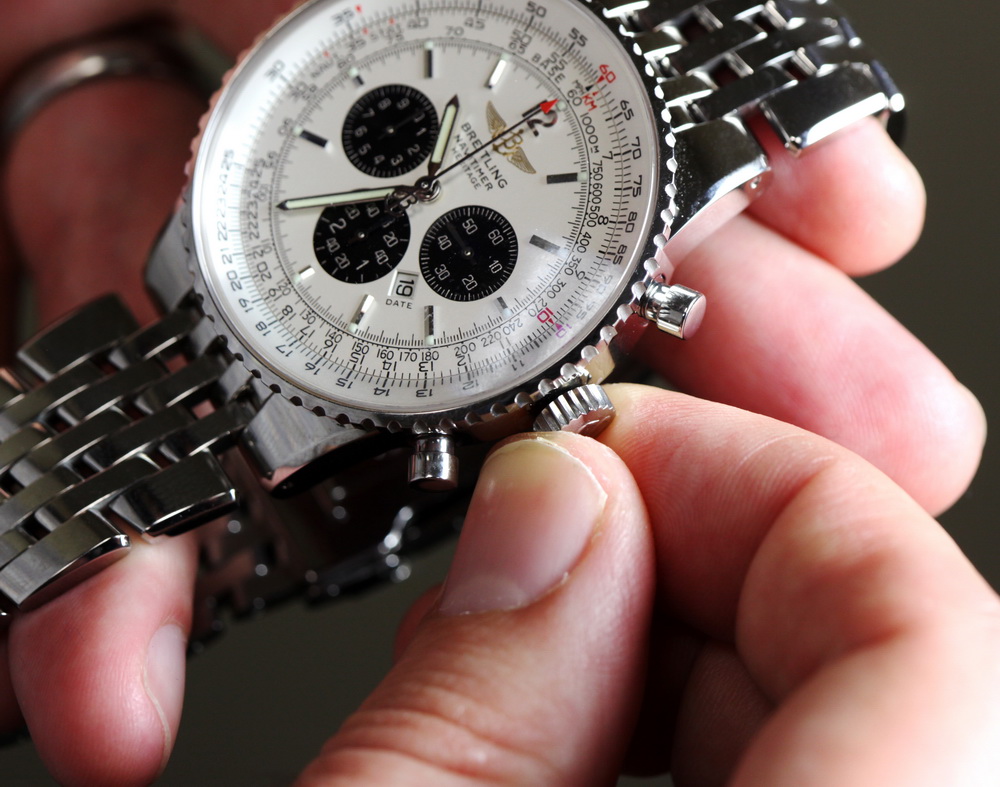
Manually winding a Breitling Navitimer by rotating the crown
There are two easy ways to keep them running though. The first is to manual wind it by rotating the crown and the second way is to use a watch winder.
Both ways have their advantages and disadvantages that we will soon go through. But before that, I would like to explain why we need to keep our automatic watches running.
Benefits Of Keeping Your Automatic Watches Running
- Convenient – take out and just use it
- No need to adjust the time or date/day
- Will keep the internal mechanism running
- Ensure the lubricating oil won’t solidify or coagulate (for older and cheap movements)
The whole idea of keeping our automatic watches running is for convenience. It means we can just simply take out the watch from drawer and put it on.
No need to adjust the time and day/date whenever we want to use it. This saves time and is great for those Monday morning rush.
This is great for watches with complications such as moon phase and perpetual calendar that are designed to be running all the time for the complications to work perfectly.
Another benefit by keeping it running all the time is the internal mechanism will keep on running, thus preventing the lubricating oil from solidify or coagulate.
But this is only true for vintage watches and low quality watches that uses mineral oil. These oil will coagulate if the mechanism does not move for quite some time, making your watch to lose its accuracy or cannot even start.
But for new modern watches, synthetic oil is commonly used so this problem does not exist anymore.
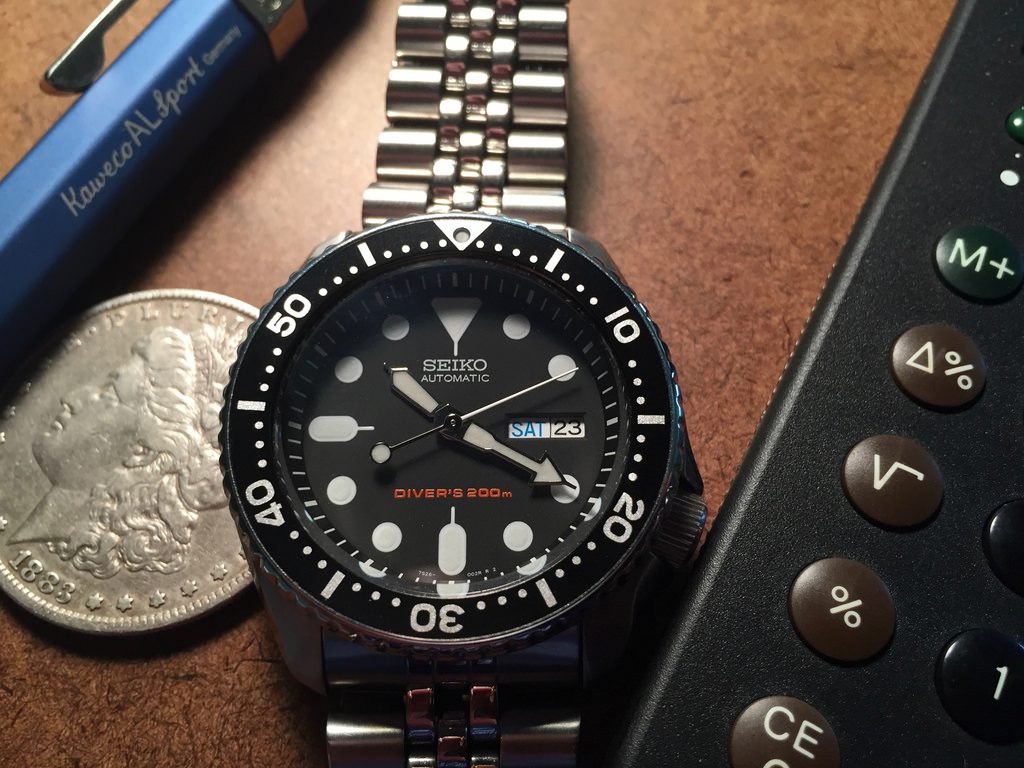 Seiko SKX007 – A watch that is revered as a true workhorse. It has been around since 1996 and some people still use their 20 year old SKX007 till this day without any major issues.
Seiko SKX007 – A watch that is revered as a true workhorse. It has been around since 1996 and some people still use their 20 year old SKX007 till this day without any major issues.
But Will Keep Watches Running All The Time Increase Its Mileage?
One thing to take note is that keeping our watches running will affect its mileage.
There are 2 ways of thinking here. One says that just like a car, a longer running and higher mileage watch means the wear and tear in its mechanism is higher, thus lowering its lifespan.
So these people advise to just not bother with keeping your extra watches running and let them drop dead when not in use. This might be able to lengthen their lifespan.
I’ve a different opinion on this. Sure, if you let it drop dead, you can save some precious years for your watch.
For someone with 3 or 4 watches, his least favorite watch might only be used once every 1 or 2 weeks. So we are talking about a few years of inactivity (and lengthening of lifespan) for this watch if he let it dead when he does not want to use it.
But watchmakers are already building watches to withstand years of abuse. Swatch Sistem51 for example, has a 20 years guarantee by the company that it will keep on running perfectly. Seiko SKX007 has been in the market for 20 years and there are still people that bought it in 1996 and use it now.
The Swiss watch industry has exist for 100 years and they are continuously building watches that can test the time.
In my opinion, automatic watches are built for years continuously running, and I don’t see any actual benefit of keeping your unused watch dead just to “lengthen its lifespan”. For all we know, these little timepieces might even outlive us.
And of course, a full service should be done on the watch at the period recommended by the manufacturer. Just like a car, a good servicing of the internal movement will do wonders to keep it working perfectly.
Swatch Sistem51 – a revolutionary automatic watch inside a plastic casing by the Swiss company Swatch. The company reportedly announced that the Sistem51 will be able to run perfectly fine for up to 20 years. Not only that, this watch also has a whopping 90 hours power reserve!
Watch Winder VS Manual Winding
We have learnt the benefit of keeping our watches ticking all the time. Whether you want to do it or not, I’ll have to leave for you to decide.
For me, a continuously running watch is very convenient and I’ll stick to that. So how to keep our watches running? As mentioned earlier, there are two ways for it: Manual winding or watch winders.
1) Manually Winding By Rotating Crown
How to manual wind your automatic watch? It’s very simple actually. Just rotate the crown upwards till you can feel and hear the movement making some faint noises.
In case you don’t know, the crown is the knob that sticks out from the watch case (Read my guide on watch’s anatomy here for pictures of the crown location).
It is also used to set the day and date of the watch. A good 20 turns (or more depending on your watchmaker’s recommendation) everyday is enough to fully wind the mainspring to full charge.
During winding, it is important to be gentle and not use too much force. Doing so will damage the crown as it is the weakest part of the watch. Using too much force could damage the gears inside,
causing you expensive repair works. Just lightly hold the crown and rotate it slightly will do. Always wind it when you are not wearing it, that is holding the watch with both hands.
Winding while wearing the watch might cause you to use more force than necessary.
A video of winding a Rolex Submariner (I purposely attached this video to share with you guys how gorgeous this watch is). The Submariner has a screw down crown, which is why the guy has to unscrew the crown first. It seems the Rolex will need 40 rotations to fully charge the mainspring and this will differs according depending on your watch model
Most modern watch has a clutch to disengage the manual winding mechanism from the mainspring to avoid overwind (the automatic rotor also has it too).
So there is no concern on overwinding your watch. But as a precaution, be mindful of the sound and feeling of the watch when its being wound. A loud, creaky and hard resistance that is abnormal might mean something is amiss and should be a concern.
2) Using A Watch Winder
A watch winder is a good alternative for people who does not want to manually wind their watches everyday. It is easy to use, can also be used as a box to hold your timepieces and can be a very nice looking addition to your bedroom.
Another good usage of the winder is when you are going for a vacation of travelling for work. On these occasions, you can’t bring your whole watch collection with you and manually winding the watch everyday is not possible. A watch winder is the perfect tool for these situations.
How Does A Watch Winder Work?
A watch winder is a very simple tool actually. The watch need to be secured to a watch pillow (just attached it like how you wear the watch using your wrist).
Then the pillow will be inserted into a hole of the watch winder. This hole is then rotated by a motor. This rotation motion will then rotate the automatic self-wind rotor and charging our timepiece.
A video showing Versa Watch Winder in operation
A Few Things To Consider When Buying A Watch Winder
A watch winder can cost from as low as $30 to hundreds of dollars. It is important for you to buy the correct watch winder then. Below are some of the tips to choose a suitable watch winder for your timepieces.
a) Which direction does it rotate?
Some watch winder will rotate clockwise or anti-clockwise. More expensive winders will have the option for both. This is very important as not all automatic watch’s rotor will rotate bi-directionally.
Some watches will rotate only in one direction. Again, you need to confirm with your watchmaker on how does the rotation of the movement going to be.
For example, a movement with rotor that only rotates clockwise will need to be attached with an anti-clockwise rotating winder to actually wind the watch correctly.
If your watch manufacturer can’t be contacted, you can try to check with Orbita database. Orbita, a watch winder manufacturer, has a comprehensive database on the directions of rotations for lots of watches. You can check it here.
b) How many watches do you have?
Watch winders come in many forms. Some have single slot to wind while others can have double or more than the space. For this, you will need to decide on how many winder slots you require for your watches as more slots will increase its price.
c) Battery operated or AC adapter?
It is recommended to use purchase an AC powered winder over battery powered units (though some winders have both options built-in). The winder will be running continuously, so a battery powered winder won’t really lasts long and you have to change it out.
d) How many turns per day (TPD)?
Most automatic watches has turn per day of around 700 to 1000. Most watch winders will have these settings in place. But some winders also have options for high turns per day (up to 2000 TPD) or a low of 300 TPD. It depends on how you use prefer to use the winder.
As always, contact your watch manufacturer for details of your watch’s TPD specification. Alternatively, you can also check in Orbita database for TPD settings (Orbita.com).
e) Motor quality
The motor is an important aspect of the winder. As mentioned earlier, the winder will be rotating quite a lot and only a high quality motor is robust enough to stay alive after a few months. Avoid Chinese made motor as much as possible as it will break in a few months max. Investing in a high quality motor is a very good decision.
f) Material of the winder’s internal
The finish of the internal of the winder is important to consider as well. A plastic or steel internals that touches with the watch could damage it due to friction when the watch is rotating inside it. A good choice is to buy a winder with soft fabric that will not damage your watch.
So, Do You Need Watch Winder?
So the big question: do you need a watch winder? It really depends on a lot of factors. One, watch winders could be pricey and some people might be turned off by that.
Not to mention manual winding is totally fine and can achieve the same objective of keeping the watch running. So why spend all those hard earned money?
But for those with a huge collection of watches, a big watch winder with up to 4 slots of winders is totally recommended as it can be quite cumbersome to wind those watches everyday.
Plus, big watch winders usually come with storage spaces for watches – you can literally make the winder as your “jewelry box” of some sort.
In the end, you yourselves has to decide if you need one. For me, my watch collections is still small and a watch winder might be too excessive.
But I can foresee as my collection grows into more expensive watches, I’ll surely get one of those winders that can also be a watch box =)
Where To Buy A Watch Winder?
For those of you that decide to purchase a watch winder, you can check the deals on Amazon. There’s a large selection of watch winder in Amazon to choose from.
Here I’ve listed some of the most popular winder on Amazon:
1- Versa Single Watch Winder
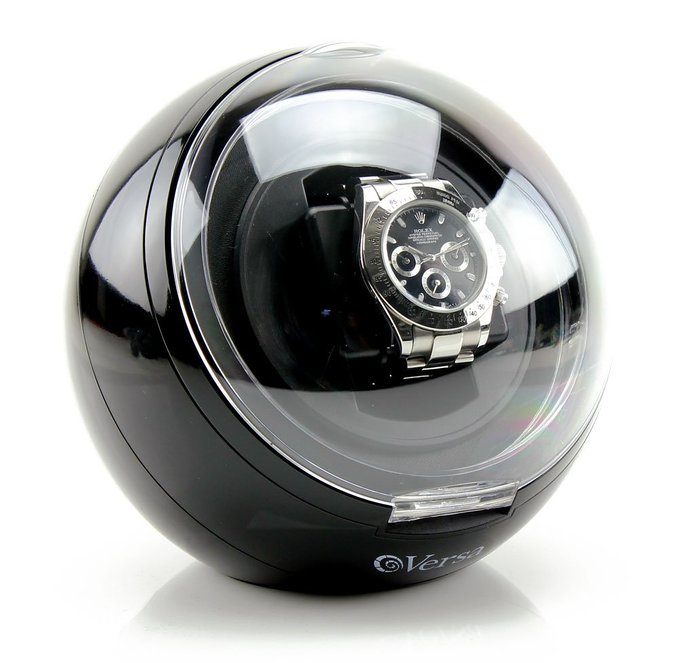
A small winder for only one watch. It is a very compact and looks good with the round spherical shape. It’s also among the cheapest watch winder on Amazon (well, that’s a given since it can only house one watch LOL!).
Either way, this is a good candidate as your first winder due to its cheaper price. Check out the Versa single winder on Amazon by clicking here.
Made from Japanese motor, this winder features dual slot for winding two watches simultaneously. It’s built with a quite nice looking finishing and has a LCD screen to conveniently show its current setting.
There’s also a key to protect your watches from prying hands. Check it out on Amazon by clicking here.
3- JQueen Quad Watch Winder
A winder with up to 4 watch slots. It has many functions and can operate with batteries or AC powered.
Check it on Amazon here.
4- Wolf Viceroy Collection – Triple Watch Winder With Storage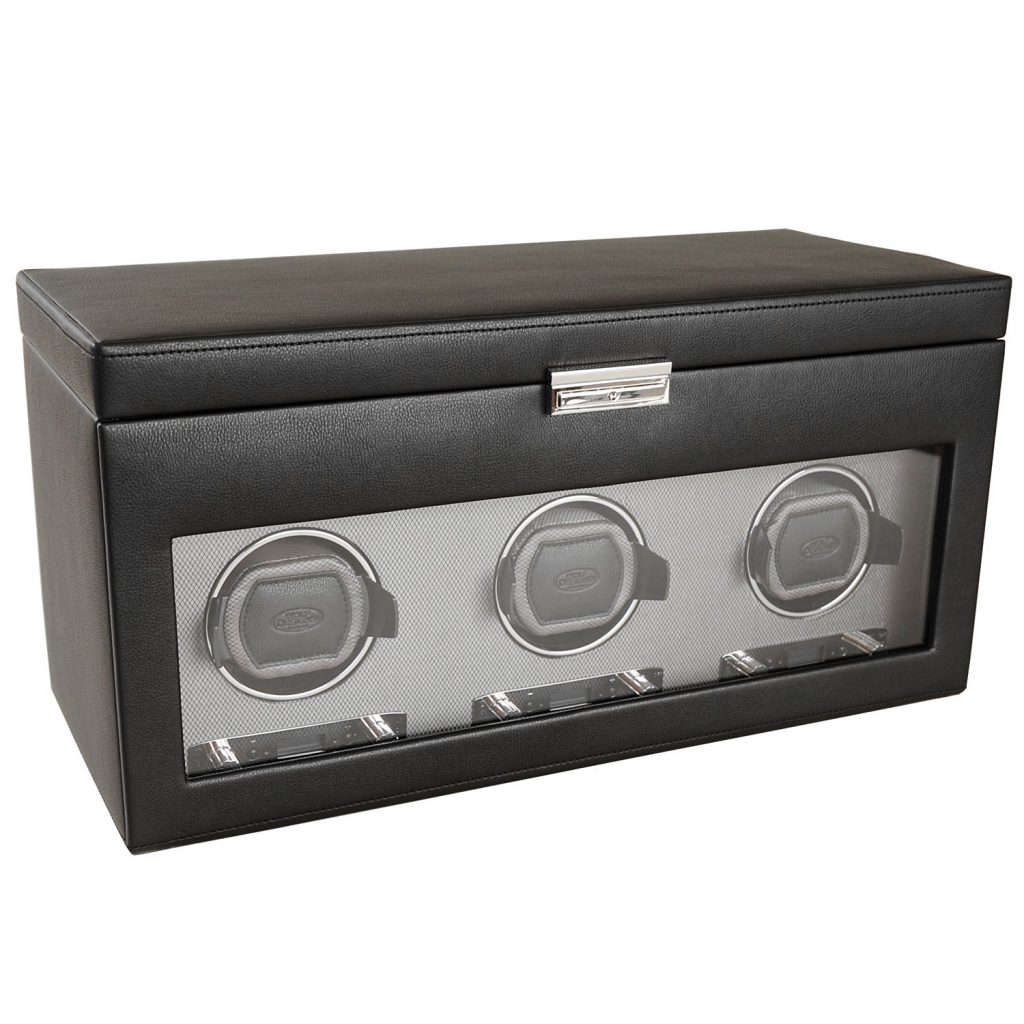
Now we’re talking. This winder is specifically designed for those with a huge collection of watches.
There are 3 slots for winders, with 5 additional storage space for watches at the top compartment – altogether there is space for 8 watches!
With quality internal and external finishing, it will be your very own man jewelry box. And it also comes with key lock to deter naughty hands (read: your kids, maid, etc.). Find out its price on Amazon by clicking here.
Hope you enjoy my article on the difference of watch winder and manual winding. Which one do you prefer? I would love to hear your opinion and experience in both methods. You can drop your comments below on the comments section and keep the ball rolling.
Till next time. Cheers!
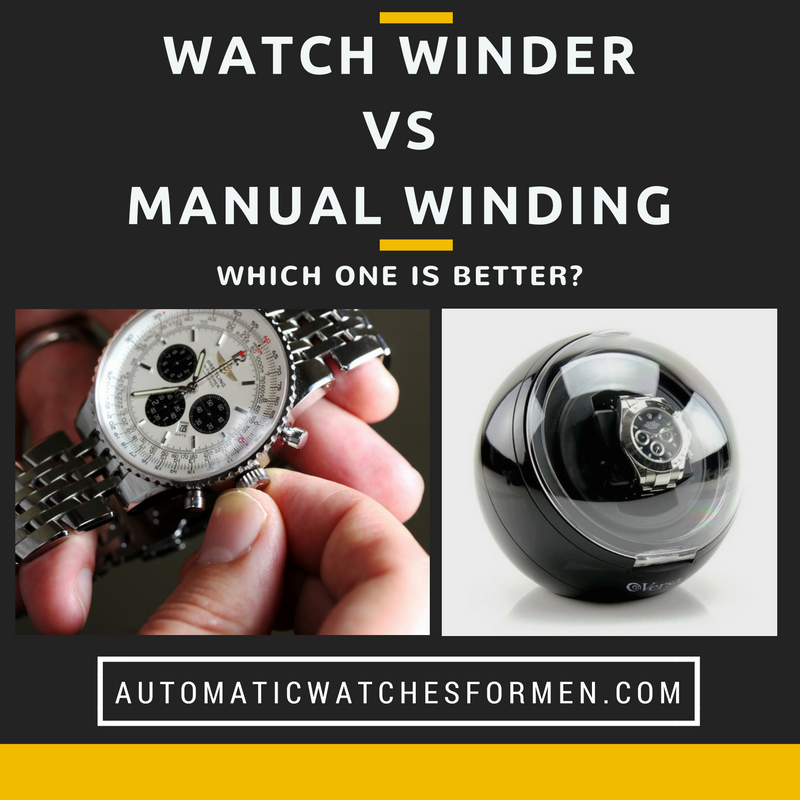
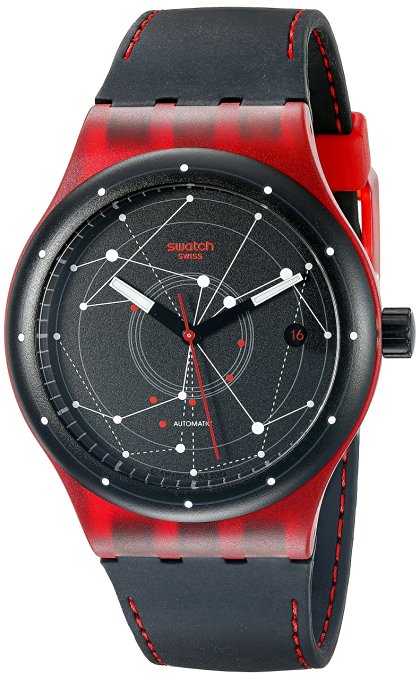
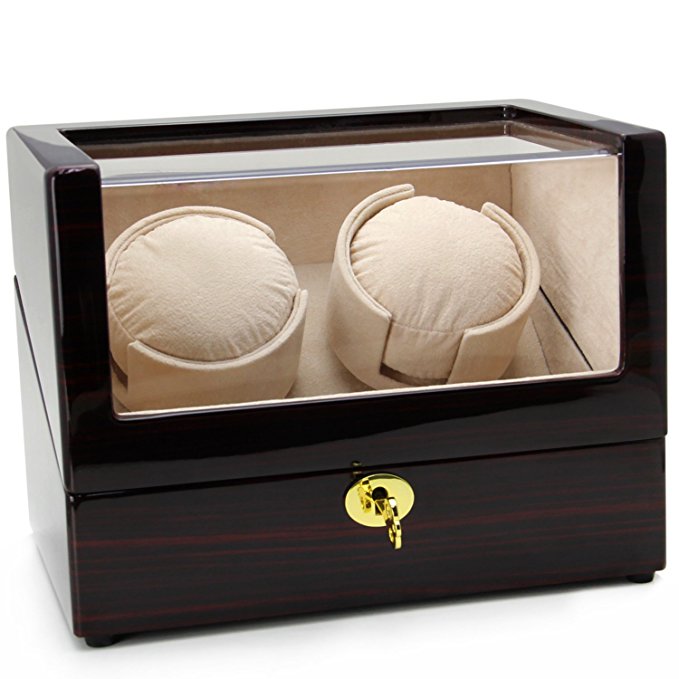

When I wake up every morning, I can go to work with my watch and don’t worry about time, this is probably the best answer,
Got this as a gift, friend loved it. Any avid/casual watch wearer/collector would appreciate.
Dear Isaac,
I have read your notes related to watch winders and took liberty to share with you some of my findings as well as with some of my conclusions.
Initial statement – my small start-up VAYL Technologies has developed a watch winder which is able to determine the state of main spring and stop winding (turning) at the moment when mainspring is fully winded. Details may follow if you are interested.
This development initially pursued the goal to eliminate unnecessary winding, causing excessive wear and tear of slipping clutch mechanism of expensive watch
After hundreds if not thousands of experiments within last two years with several automatic watches several conclusions could be made. Here they are –
1. Assuming watch is totally dead, it may take from 800 to 1800 turns to fully wind it. This result may be corrected, because it relates to 8 different watches we have experimented with. They are Blancpain, IWC, Longines, Hamilton, Chronoswiss, Seiko, Rolex, Raymond Weil.
2. This total number of turns heavily depends on speed of rotation and on plane watch is located while rotating. As such, watch located in vertical plane requires significantly less turns then same watch placed on the plane at angle of 45 degrees.
3. Each watch requires different number of turns, and as such, after 24 hours of full winding particular watch may require from 300 to 800 turns (depending on power reserve) It is clear that if any of existing winders is set up for 600 TPD, some of the watches will be exposed to unnecessary turns and some of them will stop in several days. 900 TPD will definitely cause excessive wear and tear, and I am not even talking about 1200. BTW these numbers will not guarantee full winding to all watches if initially watch was dead. Under no circumstances our winder performs extra turns or stops turning when desired level of tension is not achieved.
4. Data bases related to number of turns on many different sites are very inaccurate, because they are not taking into account issues of 2) and 3)
5. Our winder is capable to automatically determine the direction of turning and maintain the state of mainspring within certain limits established by owner. As an example one may want to keep expensive watch winded between 30% and 80% of full tension. In our opinion that may increase the longevity of watch.
I will be glad to provide you with more info if you are interested.
Best regards,
Yuliy Lieb
President
Hi Mr Lieb. That’s truly a fantastic product! I believe your company’s winder uses a sensor to determine the current tension in the mainspring?
By the way, I’m interested with what you said about keeping the power reserve at most 80% to increase a watch’s longevity. Does this mean that wearing a watch for a long time (say from early morning to midnight, more than 15 hours) will has bad effect on it?